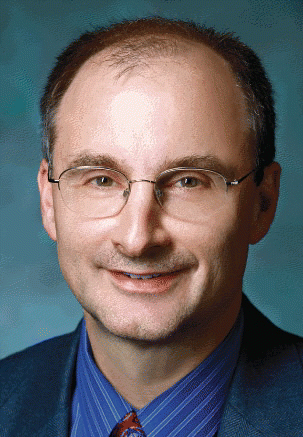They may have second airway lesions, systemic disease that affects the heart and lungs, may have feeding problems related or unrelated to the airway obstruction, and may have different clinical manifestations, he said. There is a variety of ways to evaluate these patients, including PSG and clinical monitoring, as well as various outcome measures.
Explore This Issue
December 2009Mandibular distraction is aimed at relieving airway obstruction caused by tongue base and supraglottic collapse, and in most cases internal devices are used for the distraction. The procedure is useful in children who have the Pierre-Robin triad, usually defined as retrognathia, glossoptosis, and respiratory distress-but sometimes cleft palate is substituted for respiratory distress.
Multiple retrospective studies and case series have shown both decannulation from, and avoidance of, tracheotomy, as well as improved feeding using manibular distraction, in children with the Pierre-Robin triad, he said.
 Multiple retrospective studies and case series have shown both decannulation from, and avoidance of, tracheotomy, as well as improved feeding using mandibular distraction in children with the Pierre-Robin triad.
Multiple retrospective studies and case series have shown both decannulation from, and avoidance of, tracheotomy, as well as improved feeding using mandibular distraction in children with the Pierre-Robin triad.-David Tunkel, MD
Evidence shows that there are short-term benefits from treating the Pierre-Robin triad, as well as some good long- term data-but children need long-term follow-up, as a small number of patients may have persistent or recurrent sleep apnea, Dr. Tunkel said.
However, mandibular distraction is just one of several surgical procedures that can be used for the Pierre-Robin sequence and other neonates with retronagthia causing airway obstruction, he said. Generally, it is important to decide whether intervention is needed, and do a good assessment of the nature and severity airway obstruction.
Mandibular distraction is the most appropriate intervention for certain patients. It may be for the child who is having severe airway obstruction from tongue base obstruction as a neonate, where tracheotomy is really the only other option, he said.
Con: J. Paul Willging, MD, Professor of Otolaryngology, University of Cincinnati College of Medicine.
Whereas mandibular distractions are one tool to approach retrognathia, we have a lot of other options that we’re comfortable with utilizing, Dr. Willging said. Other options include different types of nipples and positioning the child differently. And, in children who essentially lack a chin, one can wait to see if the problem goes away over time as the child grows.
When deciding which approach to use, doctors need to consider various available procedures, their efficacy, associated costs, operative morbidity, and the overall risk-benefit ration of intervening versus not intervening.
Leave a Reply